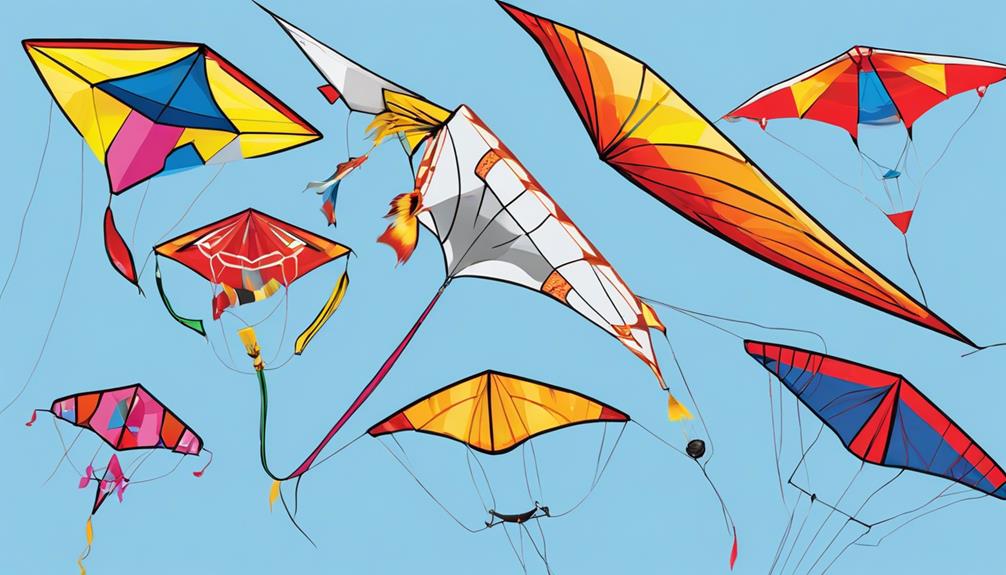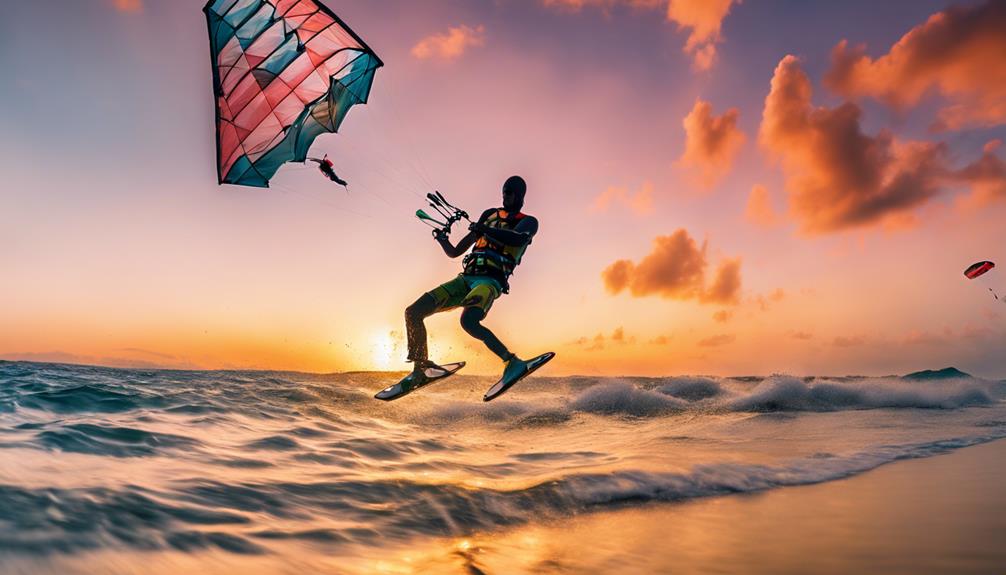Embarking on the journey of power kiting is akin to setting sail on vast, uncharted waters; it’s thrilling, filled with unknowns, and demands respect for its elements. As you stand at the precipice, kite in hand, you’re about to unlock a world where the wind doesn’t just guide you—it propels you into a realm of exhilarating freedom.
However, mastering this craft requires more than just enthusiasm; it demands knowledge, patience, and a keen understanding of the fundamentals. In the chapters ahead, you’ll discover the keys to harnessing the wind’s power safely and efficiently. But remember, the mastery of power kiting is not just about controlling the kite—it’s about letting the experience transform you.
Why not take the first step and see where this journey could take you?
Contents
Choosing Your Kite

Before diving into the exhilarating world of power kiting, it’s crucial to pick the right kite that aligns with your body weight and the prevailing wind conditions. Larger kites catch more wind, ideal for lighter breezes, whereas smaller kites offer better control in stronger winds.
Hybrid kites strike a perfect balance, especially for beginners, with their blend of performance and ease of use. Leading brands like Cabrinha, Naish, and Slingshot have mastered kite design, focusing on features such as stability and easy relaunch to smooth your learning curve.
Understanding the Wind
After choosing your kite, it’s essential to grasp how the wind’s direction, speed, and consistency play pivotal roles in your kiting adventure. Mastering these elements ensures you harness the power of the wind efficiently and safely.
Here’s what you need to consider:
- Wind Direction: Determines your kite’s path. Always be mindful of how it affects your control.
- Wind Speed: Use the Beaufort Wind Scale to choose the right kite size for optimal performance.
- Wind Consistency: Aim for steady winds. Sudden gusts or lulls can disrupt your experience.
- Turbulence: Near water bodies or obstacles, be extra cautious. Turbulence can challenge your kite control.
Understanding these aspects of the wind empowers you to kite with confidence and caution, making every outing an exhilarating yet safe adventure.
Safety and Setup
Ensuring your safety and kite setup properly is crucial to maximizing your enjoyment and minimizing risks while power kiting. Starting in light wind conditions and selecting the right site—considering wind direction and space away from obstacles—are your first steps.
Use a ground stake for secure setup and weights to hold down your kite, especially if you’re handling single-line kites. Don’t underestimate the importance of protective eyewear and gloves; they’re essential!
Understanding kite behavior in the wind window is key to maneuvering the kite effectively. Control bars aid in this process, providing precision and safety.
Kite Control Basics
Now that you’ve got your safety and setup down, let’s focus on the heart of power kiting: mastering kite control basics. Controlling the kite is both an art and a science, blending knowledge with hands-on practice. Here’s how you can start:
- Steering with the flying lines: Pull left to go left, right to go right. Keep your arms out and elbows slightly bent for better control.
- Exploring the wind window: Learn how the kite behaves at different points to improve maneuvering skills.
- Adjusting to wind conditions: Kite behavior changes with the wind, so adapt your control techniques accordingly.
- Practicing with wrist straps: They’re essential for controlling the kite lines and making precise movements.
Dive into these lessons with enthusiasm, and you’ll be mastering the power zone of kite flying in no time!
Advanced Maneuvers

Once you’ve mastered the basics, it’s time to elevate your kitesurfing with advanced maneuvers that’ll truly showcase your skills. Dive into loops, spins, and transitions to dazzle onlookers and feel the adrenaline rush.
You’ll need to know how to move the kite in a figure of eight for dynamic jumps and grabs, making every session thrilling. Tackling gusty winds and challenging conditions is essential, turning you into a versatile kitesurfer.
Perfect your timing and technique for smooth, effortless tricks. Experimenting with power control, including mastering the stopper knot, will optimize your performance. Don’t hesitate to take lessons; they’re an investment that’ll save money in the long run and help reduce the learning curve in this fastest growing sport.
Maintenance and Storage
Regularly checking and properly storing your kite can significantly extend its life and maintain its performance. As kite flyers, it’s crucial to understand how to store kites to prevent damage and keep them flying high. Here’s how you can ensure your kites last:
- Store kites in a dry, cool place away from direct sunlight to shield them from damage and fading.
- Avoid damp or humid areas to prevent mold and mildew, which can degrade fabric integrity.
- Ensure kites are completely dry before storage to maintain fabric quality and avoid mildew.
- Use a kite bag or protective cover to guard against dust, dirt, and potential damage.
Don’t forget to inspect stored kites regularly for wear, tear, or damage. Taking these steps will keep your kites in top-notch condition!
Conclusion
Now that you’ve got the lowdown on power kiting, you’re ready to hit the skies! Remember, choosing the right kite and understanding the wind are your first steps to success.
Always prioritize safety and get your setup right. Mastering kite control is crucial before you dive into advanced maneuvers.
And don’t forget, proper maintenance and storage will keep your gear in top shape. So, gear up, aim high, and enjoy the thrilling ride power kiting promises.






